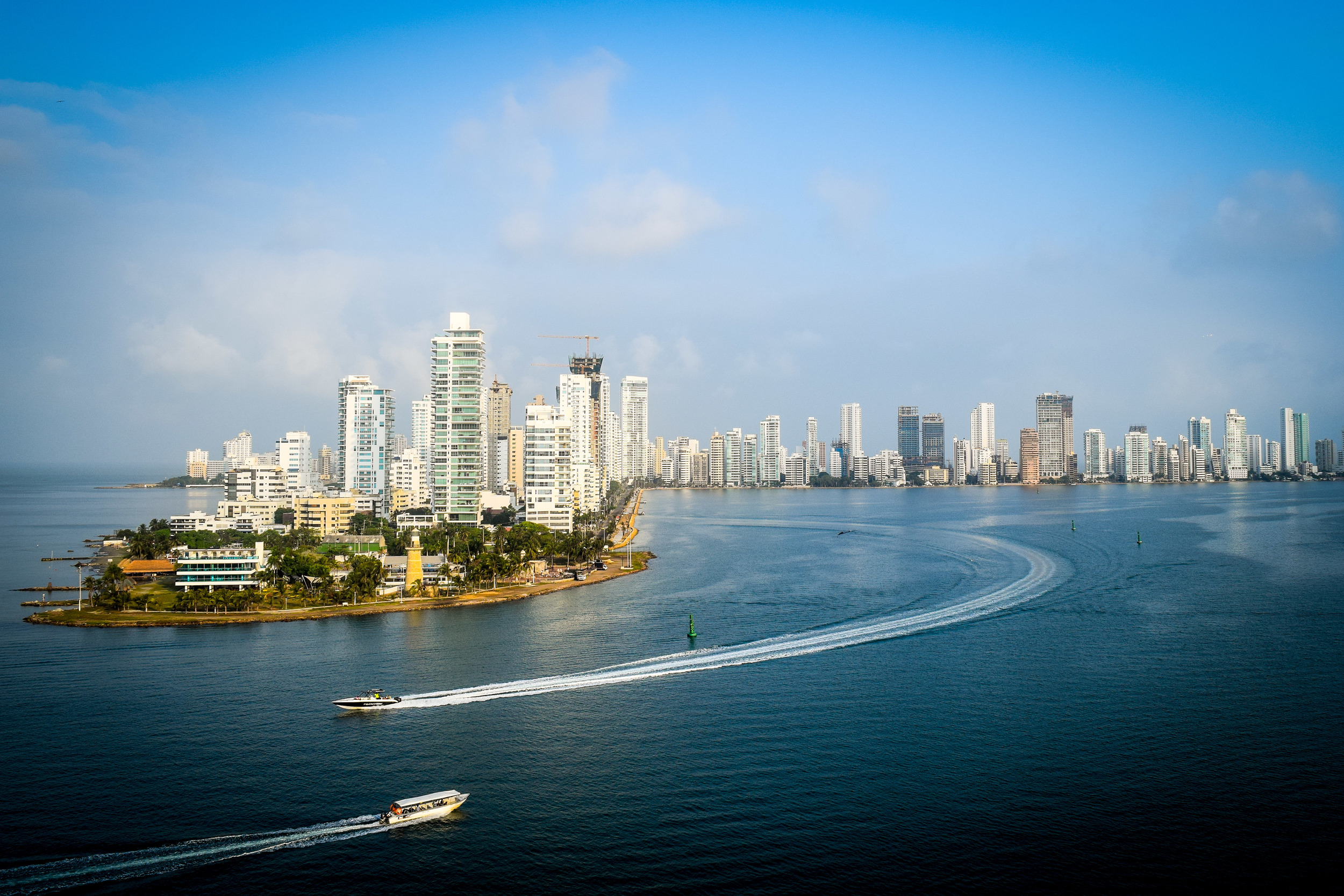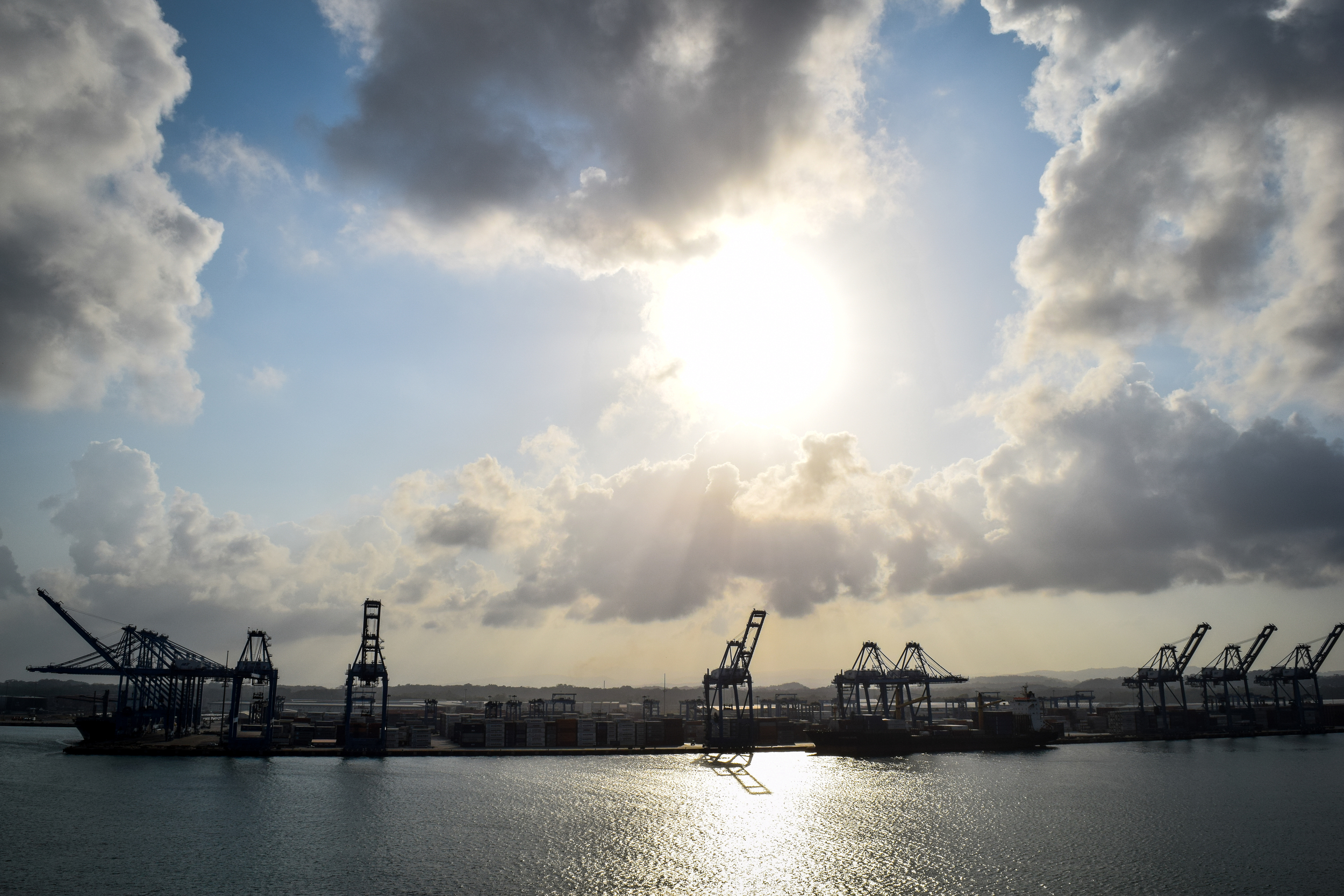Punta Arenas in the Magallanes Region of Chile
My parents arrived in Punta Arenas and didn’t have a lot of time to explore the city. Instead they were going to spend most of their day at Magdalena Island visiting the Magellanic penguin colony.
They noted that in comparison to Puerto Chacabuco, which feels isolated and forgotten by the rest of Chile, Punta Arenas has no shortage of money flowing in. The Chilean government supports the city because so many international visitors arrive here to sail for Antarctic expeditions. National Geographic's Explorer sails out of the port of Punta Arenas.
Punta Arenas was another port on my parents cruise where the Zaandam had to tender the passengers to the port.
The seaside walkway that faces out into the Straight of Magellan features a tribute to Ferdinand Magellan in the form of a giant statue of the Portuguese explorer, his ship and crew, and mermaids.
The entrance of Punta Arenas has a meteorological clock that is equipped with a barometer and hygrometer (an instrument used to measure moisture content in the atmosphere) to provide meteorological information, as well as to tell the time.
The center of Punta Arena's city park holds another monument honoring Ferdinand Magellan. Apparently if you rub the bronze foot hanging down from the monument you are destined to one day return to Punta Arenas, have good luck and safe voyages!
The vibrant and modern city of Punta Arenas has many historic houses that look as though they could once have been home to aristocrats, diplomats, or private clubs. It’s no surprise that you would find houses like this here because the city has gone through many prosperous years being an important port along the Gold Rush sailing route as well as having a major sheep farming industry. Today, tourism, sheep and cattle farming, and the oil industry support Punta Arenas.
Despite Punta Arenas current prosperity, the early years of the port were quite different. Punta Arenas was originally used as a penal colony for criminals and military personnel transferred for bad behavior. There were several prisoner riots and mutinies between 1851 and 1877, and it wasn’t until the Chilean government began offering land to locals and immigrants that the city developed and grew its success.
All of the South American ports on this cruise have at least a few colorful buildings. I just can't get enough of these! My eye is naturally drawn to color. This yellow makes me think of spring and summer and it leaves me with a really pleasant feeling about the city.
This was the first port where my parents truly felt like they were close to Antarctica. Most of the souvenir shops in the port were full of items that were penguin related, from shirts, magnets, stuffed animals, mugs, glasses, to posters and postcards. The list could go on and on!
There were also the first signs of some of the stations located on the Antarctic continent. The American run Palmer Station is located on Anvers Island and is the only American research station on the continent. It was named after Nathaniel Palmer, the captain of the first American team to reach Antarctica.
And of course, at almost the end of the world, my German parents ran into a truck from Germany advertising Schierker Feuerstein, a liqueur made in Schierke, Germany. It's a running joke in my family that we usually always see something German wherever we go or that my dad runs into someone he knows. It really is a small world!
.jpg)

